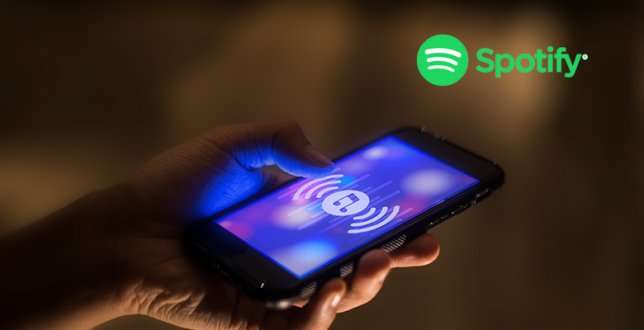
History of Spotify
Mediums to play music have been changing every decade. Right from records on gramophones to the cassettes, developers have always tried to improve the ways of listening to music. The floppy had its own special appearance right until the CDs made their debut. Soon the portable storage devices came into play but just like everything else, the internet has changed the way people listen to music as well. We no longer need to keep a physical device or a device player to listen to what we like. Streaming has taken over & Spotify was one of the firsts to take the advantage of that. Technically it was the apple with the iTunes who introduced music streaming. While the iTunes was limited to only apple phone users and that too, for a premium price, Spotify, which was found in 2006 in Stockholm, Sweden, made it open source & free for everyone to stream music online.
Spotify was found in 2006 by Daniel Ek and Martin Lorentzon in Stockholm, Sweden. Their head office is in London but most of its research work is still done from Stockholm. It was launched as free & the free sign-up was based on invite-only method. It took them nearly 4 years to enter the USA. They hired Sean Parker, the infamous co-founder of file-sharing site Napster, to manage relationships with record labels. They didn’t just limit themselves to music streaming. In 2015 they launched video streaming as well.
They’ve had their own share of criticism. Many artists such as Taylor Swift have pulled back their work from Spotify sighting payment issues. Since Spotify deals directly with record labels, the actual artists get paid a very nominal amount. Their revenue distribution based on popularity was also widely criticized.
Spotify Business Model
Artists & record labels were quick to pounce upon the emergence of technology. First, it was iTunes, then youtube & now dozens of music streaming apps. With a user base as big as 179 million, it was evident that all the leading record labels & artists would want to release their tracks on Spotify along with the worldwide release elsewhere. Spotify business model is an interesting case study in the digital music streaming industry. What started from just music has reached new heights today. They also stream videos which effectively eliminates your need to launch the music video of the track from youtube. Soon they launched other podcasts. Stand-up comedians like Patton Oswalt, Russel Peters, Aziz Ansari, Amy Schumer started to release their acts on Spotify. But the real game changer was the releases of audiobooks on Spotify. They collaborated with celebrated writers & celebrities who narrated best sellers on Spotify. We all agreed on the fact that technology will never challenge books, but Spotify did & they called it the “word”.
They launched the “word” with a collection of famous speeches, educational college lectures & books. It was just a matter of time when organizations like Ted Talks collaborated with them. Spotify was now about every sound you hear in the world. They had a variety of categories. Starting from guided meditation to scary stories, fictions to biographies, you name it & they had it. They also had a section called The Artist Speaks in which they interviewed artists & song makers & listeners could enjoy the whole behind the scene drama of all their favourite tracks.
How does Spotify Make Money?
While it continued to emerge as the most popular music streaming platform on most parts of the world, Spotify struggled to generate revenues. For the most part of its initial journey, they remained in a significant loss. As the wired reports, Spotify made more than 40 million euros for labels, which was more than any other retailer, offline or online.
All this apart, they continued to report annual revenue losses even years after its growth. Spotify was not a profit making company till 2017, some reports suggest. So, how does Spotify make money!!
As reported in 2012 by TechCrunch, Spotify recorded a $60 million loss in the year 2011. But the year 2012 brought some good news as they were on their way to hit a $500m revenue mark half way into the calendar year. This was due to the $100m investment they reportedly received to enter the US market, with the help of the recruitment of Sean Parker.
Spotify has always struggled to make money as the advertisement revenue & membership premium fees could never match the astonishing royalty amount they were required to pay to the leading record labels. As per a report from The Wallstreet Journal in 2015, Spotify made a sum of over $500 million from a fundraising campaign. This was still not enough as they continued to record losses every financial year. The only way out of this seemed making the company public & to launch the IPO. But that sounded a bit premature in 2016/17 as they wanted to launch themselves in the stock market with a better balance sheet. As per a report, Spotify has so far paid $9 billion in royalties to the artists & music companies since its inception in the late 2000s.
Earlier this year, Spotify went public & much to everyone’s surprise, it became the first company to open at a billion dollars. This came as a huge boost to them as they could finally afford to not only pay a rich sum to artists & record labels but also invest in making the user experience much better, which the company claims were their sole moto behind entering the stock market.
Spotify Business Model Canvas

How does Spotify Work?
Know how does Spotify work! Spotify was launched with a freemium business model which meant that all the basic services were free but you could get some premium services by paying a certain amount every month. The idea sounded simple & effective but the product they were catering to the world was very expensive to be covered by just premium subscription money. Anyone can stream music for free on Spotify but the premium subscribers can enjoy ad-free, high-quality uninterrupted music streaming with options to download music for offline times. Users can make, edit & share their playlists by connecting it to other social media platforms. The standard rates for a monthly premium subscription is $9.99 with reduced rates of $4.99 for students.
The reason Spotify struggled to generate large revenues all these years was down to a simple fact that music record labels were costing them a huge sum. To add to their miseries, they faced massive criticism for underpaying the artists. The concept was to pay artists based on their popularity. The more their tracks were played, more money they were due to be paid, unlike the popular model of paying a fix upfront sum regardless of the success or failure of the track. Spotify mainly deals with the rights holders, which are music companies. 70% of their revenue goes to paying the music companies, who further pay the artists based on their individual contracts with them. This led to a massive backlash among many popular artists. To fix this problem, Spotify came up with an idea to let the artists keep their new releases exclusive to premium subscribers only for some period.
Prior to the IPO, Spotify had limited options to make money. They launched sponsored playlists & other sponsored content to its users. Spotify offers a wide range of advertisement types to other businesses. The popular ad categories are branded movements, sponsored playlists & sessions, video takeovers, audio display, overlay, homepage takeovers, branded playlists & pages for advertisements. These were clickable ads that would redirect users to the source website of the advertiser. Some popping on the home screen while some generating an ad interrupting a song play through an audio description & a banner that the user can click/tap on.
Another game changer for Spotify was their family plan. Subscribers can add 5 more members to their premium accounts. The two conditions were that the members must be living on the same address & they should meet the age requirements as per Spotify’s terms & conditions. You can invite people to join your family plan or you can join someone else’s. The family plan costs $14.99 per month for 6 users including one master user which is responsible for making the payments & editing the cluster & 5 family members. Compared to $9.99 per month for a single user, this was a huge relief. The idea was to include as many people as possible to the Spotify family. Trade analyst predicted a drop in total revenue with this move. Spotify is one of their filings admitted that the introduction of family & student plans have led to a slight dip in the average revenue per user (premium).
The derivatives
Spotify has been a game changer & has almost ended music piracy globally. All its challenges apart, they have continued to make money in billions. Unfortunately that most of that revenue goes out quickly to pay a hefty sum of royalties to the music companies & artists. The concept of legally streaming content for free was further adapted by likes of Netflix which not only challenged movie piracy but also helped pave a way for original content creators who could not break into the conventional movie or TV distribution system.
Spotify has also launched many exclusive singles of aspiring artists. It benefited both the artists as well as listeners. If 15 years back anyone told us that you could legally listen to all the top music for free, we would laugh on their faces. Spotify since its inception has not just limited themselves to music but also launched various other forms of entertainment. They are limited to 60 regions around the globe, but now that the funding is not a problem, we can expect them to launch their services across every contingent. While many streaming apps & websites boast of their popularity, it is only fair to acknowledge that Spotify was indeed the flag bearer of this movement.
How to Start a Website Similar to Spotify?
If you are attracted with the facts and figures of Spotify and also want to start a similar Website like Spotify then take a look at a customizable ready-to-go Spotify clone script for your start-up.
Share your thoughts with us!
What is your opinion regarding the article on Insights into Spotify Business model? Tell us in the comment section below.
Here are some other informative articles articulated by NCrypted Websites:



Yes, Spotify has been a game changer, help me i also want to know more, email me please
Hi dear,
Very amazing information, i am planning something similar. Can yyou please provide some guidance.
Hi I Pandit Mahendra Joshi pl clarify my some points
1. How to reach to seedfund invester for a new startup
The article on Spotify’s business model is truly enlightening. It provides a comprehensive understanding of how Spotify generates revenue and operates. The insights into subscription tiers, licensing, and partnerships are invaluable. Kudos to the writer for this insightful piece!